During tactics training at the International Fire Academy, questions are repeatedly asked about command structure and tactical practice at the fire service's location. Therefore, in this article, we have once again compiled important information on command structures and also address the special challenge of operational communication, which, according to our experience, should be practised very intensively.
Who commands the operation in the initial phase?
The Swiss regulations manual "Handbuch Führung Grossereignisse" of the Fire Service Coordination Switzerland (FSCS) specifies an overall incident command that manages the fire, police and ambulance services and, in the case of railway tunnels, the railway services. The fire service commander, in turn, manages the sections of the fire department - as shown in the figure below. However, since it will take some time for the overall incident command to be fully set up during an operation, the question arises: From which portal should the operation be led in the initial phase?
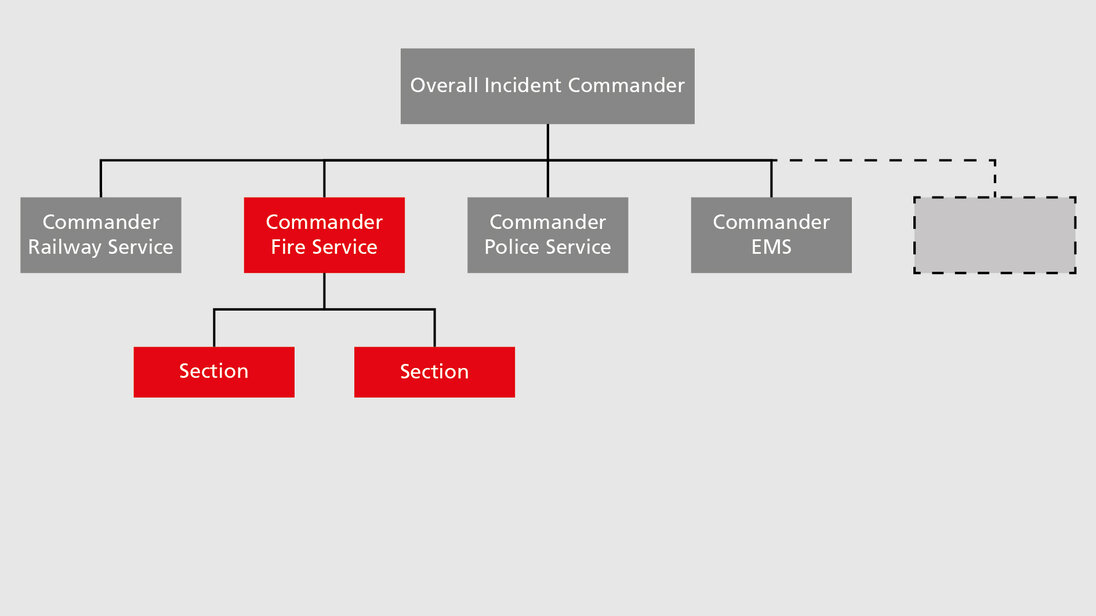
The Didactics and Development Team of the International Fire Academy recommends two criteria for this decision: On the one hand, it seems sensible that the fire service with the greater command resources should take the initial lead. This can be clarified in the course of operational planning. On the other hand, situational conditions can also be a determining factor. If the officers on one side are very busy while their colleagues on the other side «don't have much to do», the latter should take over the lead and thus, for example, the communication with the operations centre. Therefore, in our officer courses, the task is given to the participants to agree on their respective concrete roles according to the situation. Depending on the situation, e.g. in the case of a sudden reversing of the airflow in the tunnel, it may also make sense to switch roles.
Define sections as needed
Depending on the size and complexity of the tunnel system and the extent of the incident, a different number of sections may be required. How these are to be formally designated results from the regulations of the respective fire service system. The graphic below shows a general example of the State Fire Service School Baden-Württemberg for the top three command levels.
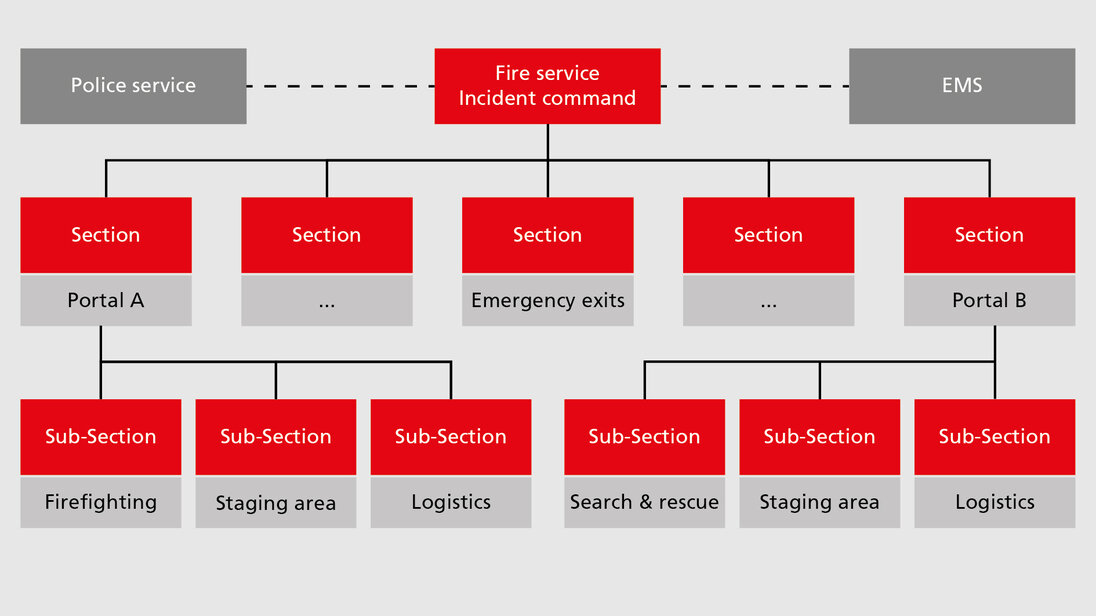
However, the specific command structure must always be adapted to the respective tunnel system. For example, more and more road and rail tunnels are coming into operation that are equipped with more than two portals, which may require the formation of additional sections. Other tunnels are not equipped with an extinguishing water supply. It can make sense to plan a section for water supply over long distances in these cases.
High flexibility is required during operation
No planning will be able to cover all eventualities of an actual operation. In railway tunnels in particular, the possible combinations of the train's location in the tunnel, the location of the fire in or on the train, the airflow and the behaviour of the passengers lead to an almost unmanageable variety of possible situations and thus also to a different need for forming sections. Therefore, the International Fire Academy recommends practising situational forming of sections intensively. It does not require much: A simple tunnel plan is sufficient to be able to play through different scenarios.
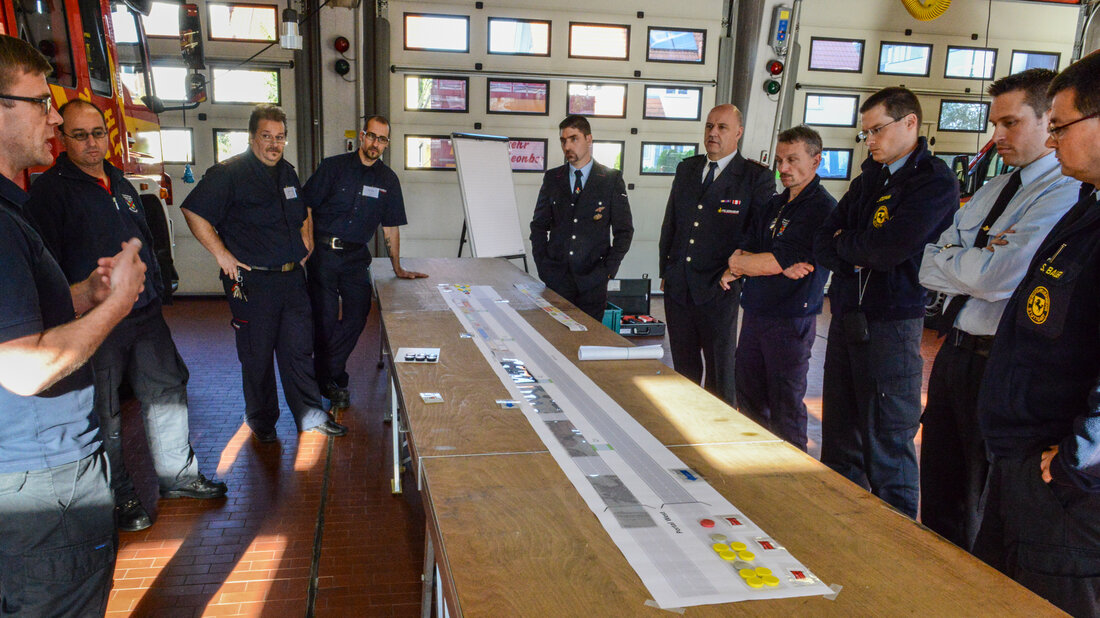
The main problem is the physical distance
It is in the character of tunnels to overcome spatial obstacles, for example, mountains or rivers. It usually makes it impossible for the heads of operations to confer face-to-face. The majority of all communications take place as radio calls. Nothing can be shown to each other, and everything must be described in words - unless electronic operational planning or management tools are used. Therefore, the highest priority is the technical and organisational ensuring of communication between the participating command units.
In the case of operations in road tunnels, this concerns at least the fire services' section command and communications centres. In the case of railway operations, the operations control centres and the railway officers deployed on-site are also involved. The International Fire Academy recommends planning the communication links together with all the organisations involved and drawing up appropriate radio communication plans, as shown below with an example.
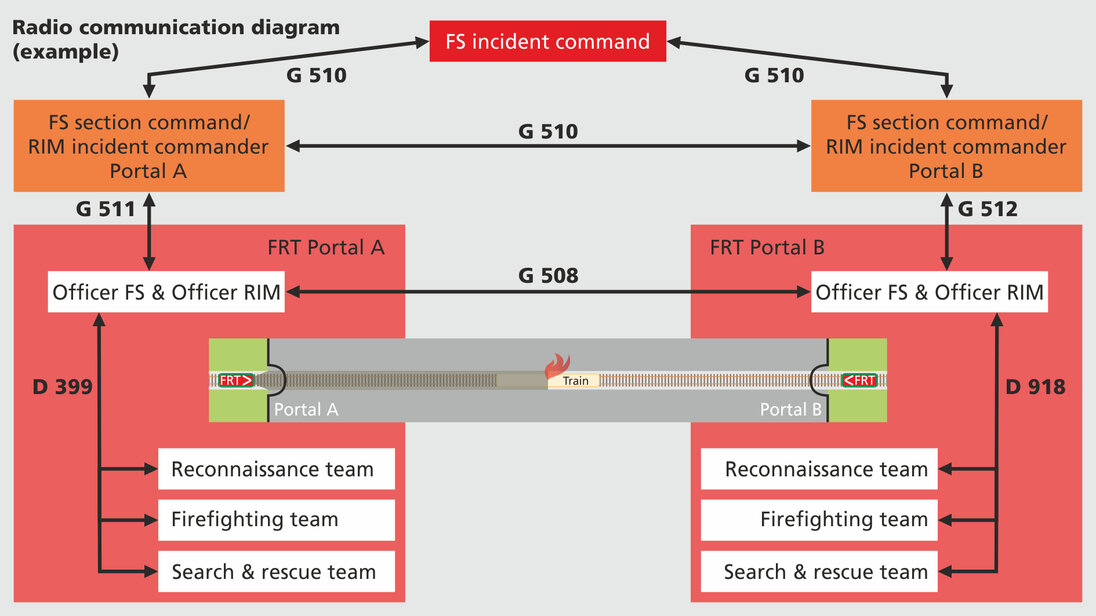
Practising communicating too
In our training operations, we experience time and again that communication is one of the biggest challenges for many firefighters. While the radios are operated correctly, and the radio operator rules are usually well followed. However, many course participants find it challenging to select and formulate the content. Often, essential things are not communicated, and instead, trivial things are described in detail.
Therefore, the International Fire Academy recommends consciously making operational communications a topic in the drill debriefing: Who would have needed what information and when? Where were these available? Why were they not transmitted? How can a sufficient level of information be achieved among all people involved? This communication about communication is time-consuming. However, it is worthwhile because almost all mission reports identify «communication problems» as the most significant shortcoming.
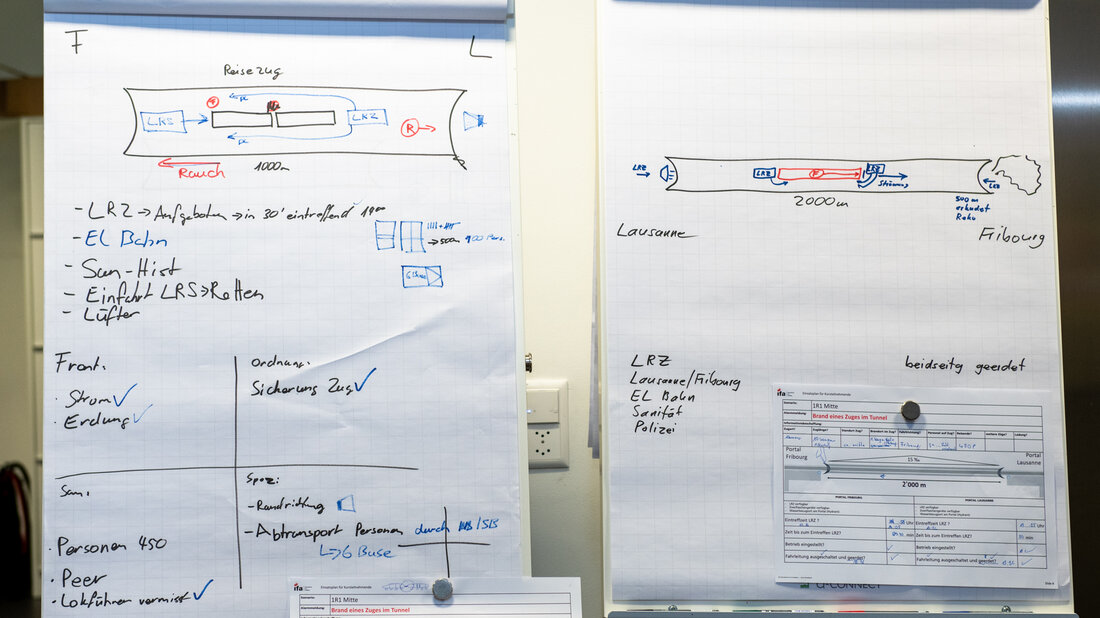
Basic prerequisite: uniform terms
One of the most important prerequisites for successful communications are uniform terms. It starts with the tunnel infrastructure. For example, a crosscut is not an adit. A crosscut connects two tunnel tubes, while an adit leads to the outside. This does not mean that every firefighter has to be familiar with all the terms used in construction and operation, but with the few that describe their «own» tunnel.
If the «own» tunnel does not have an adit, then the responsible fire service does not need this term. However, if it is, then it should also be called an adit, and this term should be used correctly by all participants during drills etc. The figure below shows an example of how concepts can be defined and taught. It was created for the training of officers on the tunnel-rich Nuremberg-Ebensfeld railway line.
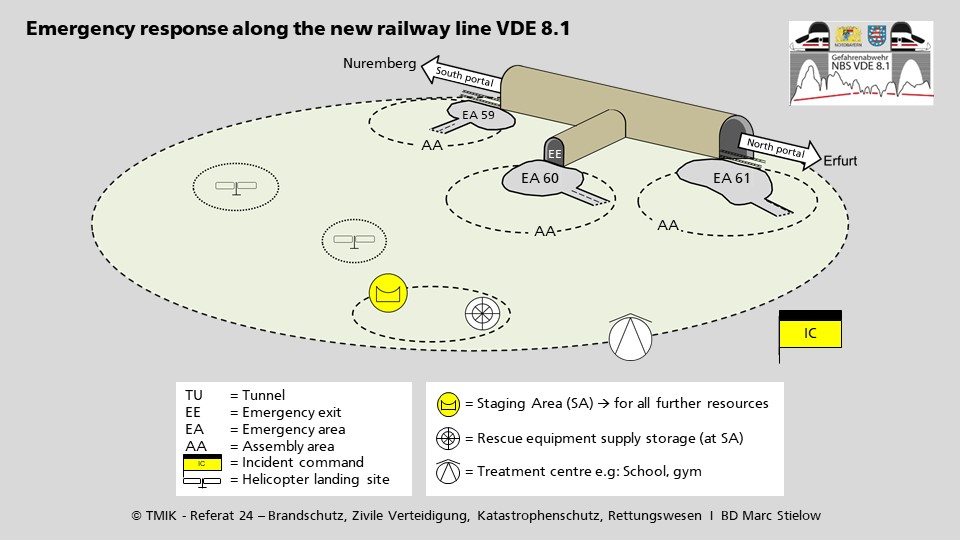
Aids of the International Fire Academy
The International Fire Academy offers numerous aids for mission planning and preparation. The textbooks «Firefighting Operations in Road Tunnels» and «Firefighting Operations in Railway Tunnels» contain all the terms relevant to operations in the fields of structural, facility and operational science, as well as comprehensive checklists for creating operational plans. Sample operational plans and much more valuable information can be downloaded from the [«Knowledge section»].The International Fire Academy offers numerous aids for mission planning and preparation. The [textbooks] «Firefighting Operations in Road Tunnels» and «Firefighting Operations in Railway Tunnels» contain all the terms relevant to operations in the fields of structural, facility and operational science, as well as comprehensive checklists for creating operational plans. Sample operational plans and much more valuable information can be downloaded from the «Knowledge section».


![[Translate to English:] Stabsraum [Translate to English:] Stabsraum für den Lötschberg-Basistunnel mit Besprechungstisch und Funktionswesten über den Stuhllehnen](/fileadmin/_processed_/9/4/csm_ifa_MAG_418_Pilot67_d9d2bdbcb0.webp)